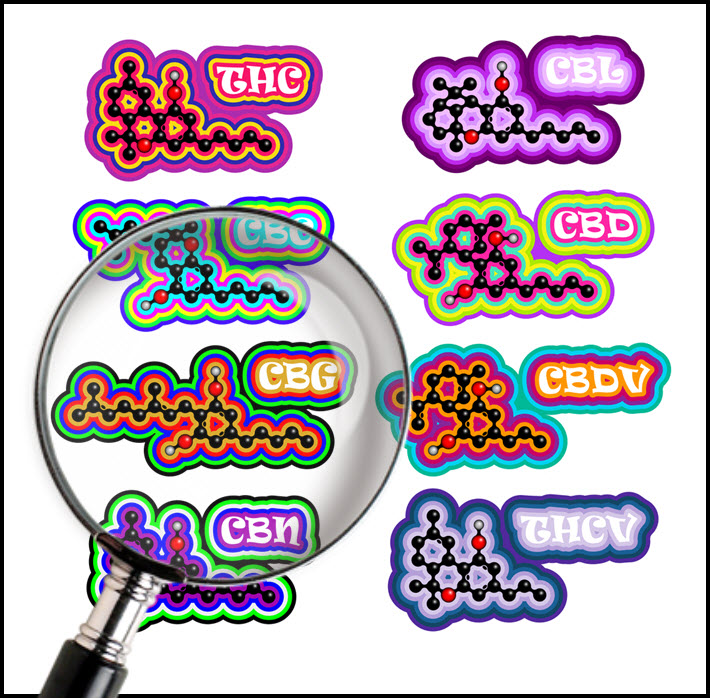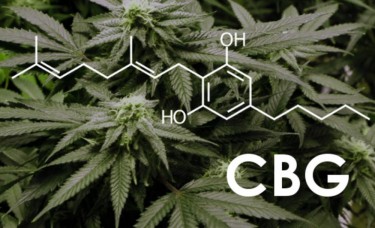
How effective is CBG for pain relief?
Pain is a common symptom in almost all diseases in the world. Since the dawn of civilization, medical professionals have looked for ways to effectively treat pain, and they have found some. But the search for better treatments to relieve pain is still ongoing.
The widespread acceptance of cannabis, as well as new legislation to support drug use, has paved the way for scientists to discover which compounds make cannabis an effective therapeutic. Now the world has learned that most cannabinoids are responsible for the medicinal abilities of cannabis.
Recent clinical studies and experiments conducted on cannabis plants have shown that one of its smaller cannabinoids may be a better and more effective treatment for pain. That compound is cannabigerol (CBG).
Compared to tetrahydrocannabinol (THC) and cannabidiol (CBD), cannabigerol is a fairly ignored compound. There is less demand and, like other smaller cannabinoids, phytochemicals, and terpenes, very little research has been done on them.
To meet demand for THC and CBD cannabis products, breeders have pushed aside attempting to improve the other compounds that make up the plant. Growers also focus on growing cannabis plants primarily for their THC and CBD content.
Studies have shown that CBG can be a better treatment for providing pain relief, calmness, and poise in medical marijuana patients. But how effective can this connection be?
What is cannabigerol (CBG)?
Cannabigerol, commonly referred to as CBG, is a minor cannabinoid that is not psychoactive. It is found in high concentrations in high-CBD and low-THC cannabis strains such as hemp.
The difference between CBG and other smaller cannabinoids is that cannabigerol is the main producer of THC and CBD. This may sound confusing, but the explanation is that all cannabinoids were formed from their acidic precursors. In this case, CBGA (the acidic precursor to CBG) is produced in extreme quantities in cannabis plants, but as the plant matures, most of it is converted into THCA and CBDA (both of which are acidic precursors of THC and CBD, respectively). A very small amount of CBGA is converted into CBG. For this reason, CBG is commonly referred to as the mother of all cannabinoids.
Like other cannabinoids, CBG binds to cannabinoid receptors in the brain to produce therapeutic responses. Instead of provoking a psychoactive response in the user like THC does, CBG instead acts to reduce the psychoactive effects caused by THC. For example, if a cannabis user consumes products with higher THC levels, it will help alleviate the induced paranoia or stress.
Scientists claim that cannabigerol has the ability to fight pain, nausea, and inflammation, and even has anti-cancer properties. Clinical studies show that the compound was effective against glaucoma as it was seen to significantly lower the intraocular pressure associated with the condition. CBG can be used to effectively treat conditions such as Crohn’s disease, inflammatory bowel disease, and cancer.
Effects of cannabigerol
This rare cannabinoid has shown potential in the treatment of a wide variety of symptoms and disease conditions. Some of the symptoms that have been shown to be effective in providing relief include:
-
pains
-
inflammation
-
Oxidative stress
-
anxiety
-
Emphasize
Cannabigerol and pain
As mentioned earlier, cannabigerol is a rare and versatile cannabinoid that has the potential to treat a range of ailments, and a handful of studies have been published to support these claims. When ingested, CBG is instantly broken down in the body into THC, CBD, and CBD compounds.
Exploring the relationship between cannabigerol and pain
A recent experiment examines the relationship between chronic pain and cannabigerol. Patients who identify as frequent consumers of products with high CBG content volunteered for the survey / study.
The researchers reported that this was the first clinical study on the use of cannabigerol. The survey documented the effectiveness of high-CBG cannabis in treating depression, chronic pain, anxiety, and insomnia. Over half of the volunteers said the drug was more effective than traditional pharmacotherapy. They also noted that there was a slight side effect. In addition, some respondents say they have problems withdrawing products.
At the end of the survey, the researchers found that cannabis and high-CBD by-products are available in some pharmacies and are sold in bulk by cannabis patients. They also added that more controlled trials of CBG-based cannabis drugs need to be scrutinized. Further testing and research will evaluate the effectiveness and safety of using CBG to treat symptoms such as pain and stress. Researchers will also be able to establish a standard dose for administration as well as the therapeutic effects of using the drug.
CBG or THC: which pain reliever is better?
It is too early to conclude on the best pain reliever. But studies are being done to determine what is.
In the early 2000s, several clinical studies were conducted to test the effectiveness of THC in pain relief. Several of these studies reported that THC had more anti-inflammatory properties than regular aspirin and hydrocortisone. It was also found that it doesn’t pose the same bleeding risks as NSAIDs.
The downside of THC is that it is a psychoactive drug that could make it difficult for patients to adapt without the risk of addiction.
On the other hand, CBG and CBD, which are non-intoxicating cannabis components, may be better options. A 2017 study found that CBG had even stronger anesthetic levels than THC. Another study published in the 1970s found that CBG could be used in conditions such as chronic pain, as analgesics, seizures, as muscle relaxants, and anxiety disorders.
diploma
Cannabigerol shows promise as a potential analgesic for pain relief in some medical conditions. Before it can be approved for clinical use, long-term clinical studies must be carried out to fully monitor the drug’s potential. There are at least a dozen other smaller cannabinoids that have shown therapeutic potential as well. Some of them are CBC, THCV, and CBN. This shows that cannabinoid research needs to advance from this restrictive infant stage.
WHAT IS CBG, READ THIS …

WHAT IS THE CBG CANNABINOID AND WHAT DOES IT DO?
OR..

WHY IS CBGa THE MOTHER OF ALL PHYTO-CANNABINOIDS?

Post a comment: